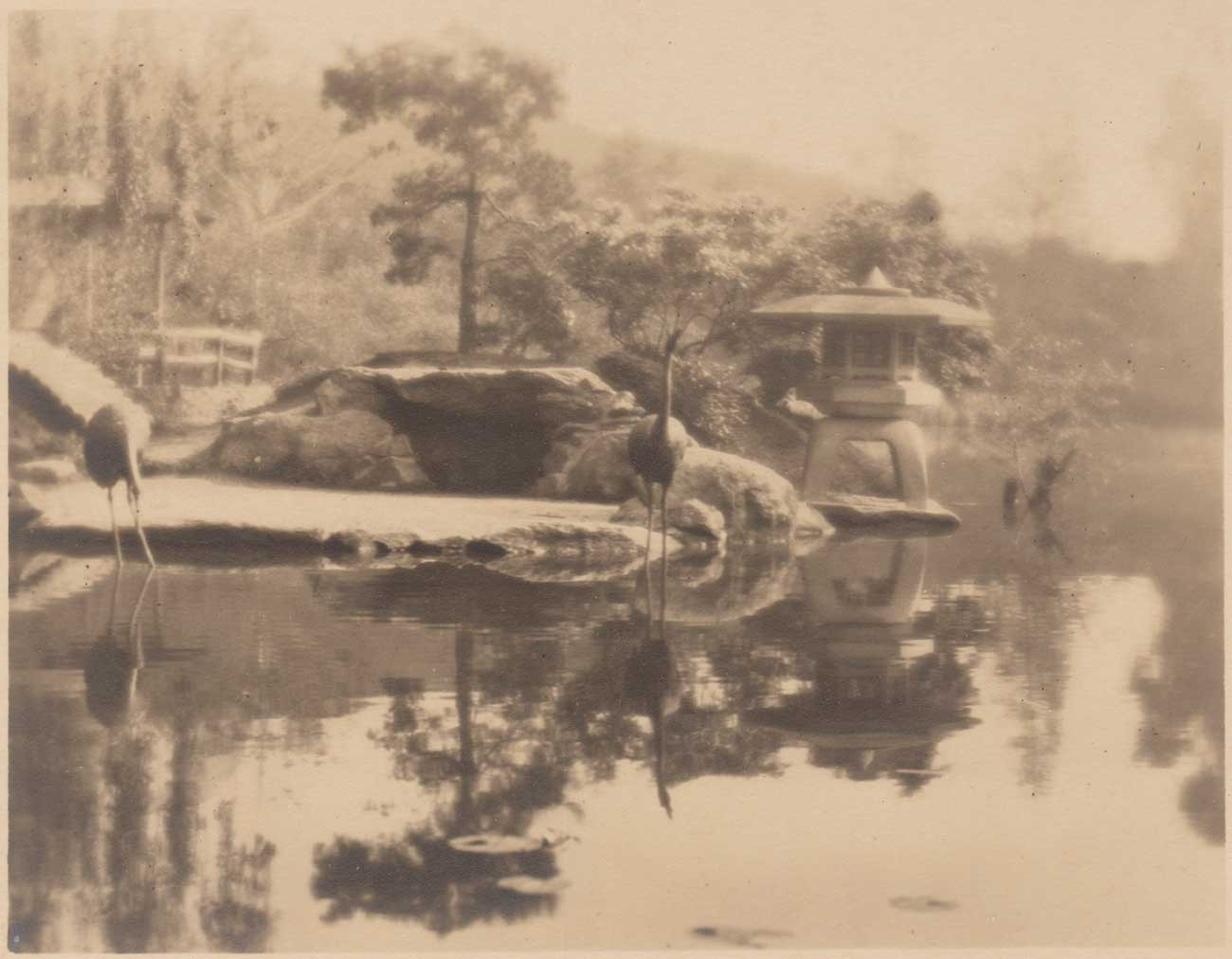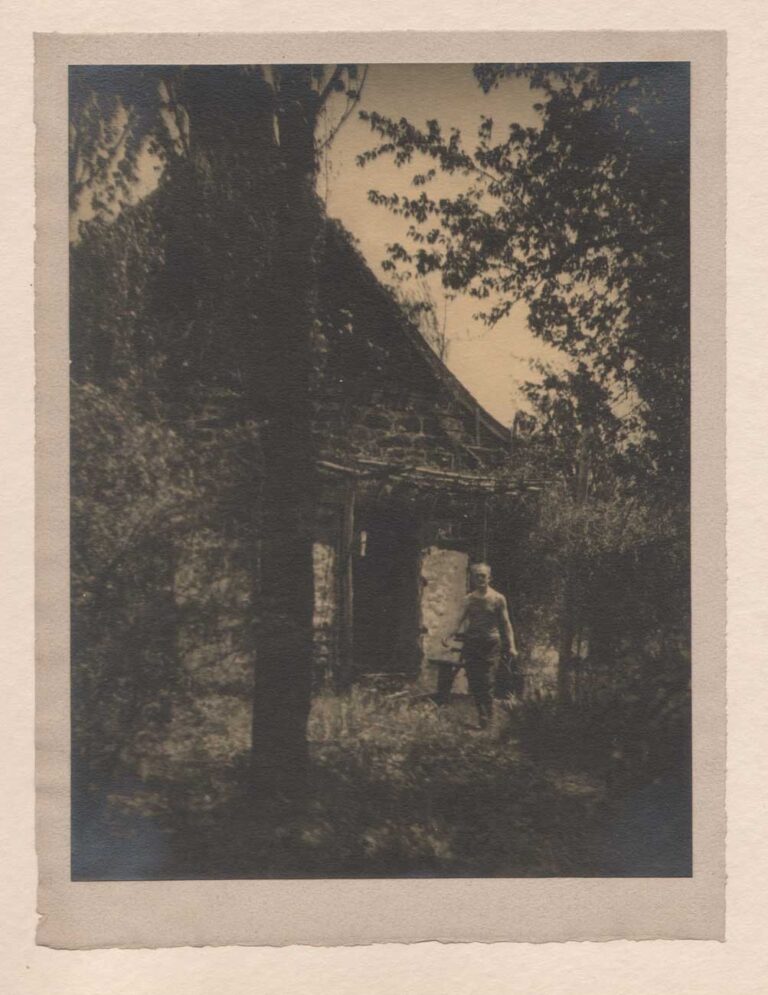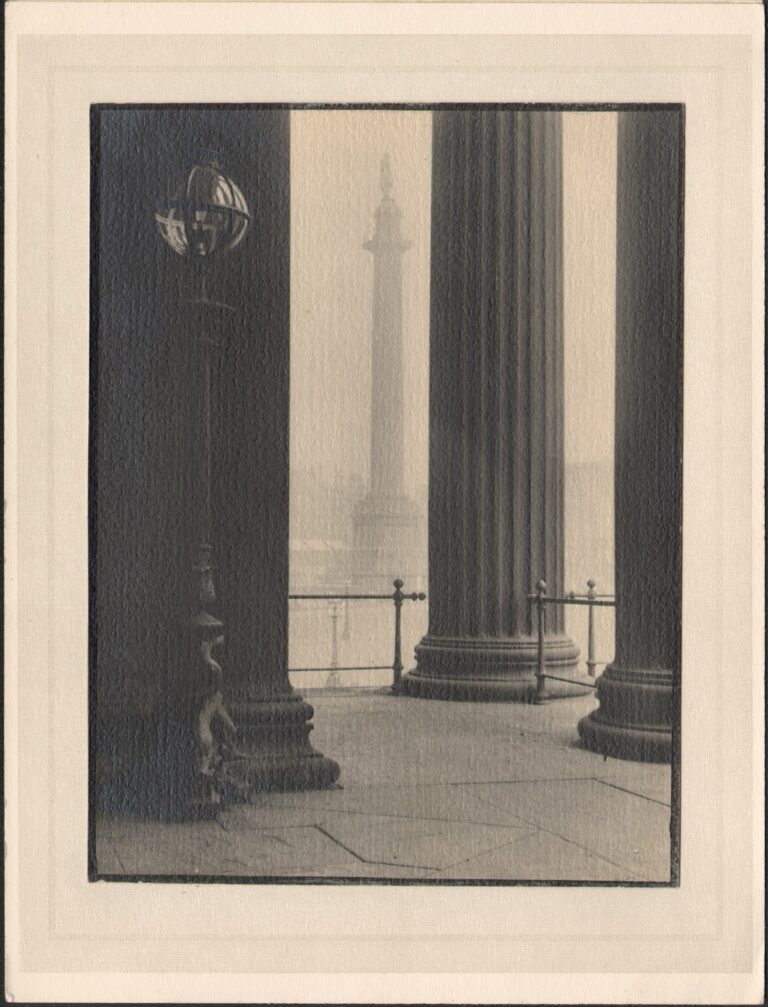
Japanese Hill-and-Pond Garden Island
This pictorialist landscape photograph taken most likely in the early 1920’s of the 3.5 acre shows the small island feature in the Japanese Hill-and-Pond Garden located within the Brooklyn Botanic Garden. At center can be seen the entrance to a small cave and to the right, a large stone Yukimi lantern. At front are the two original bronze storks, (or cranes) each approximately five feet tall. The century-old Japanese garden is described thus by the Garden’s website:
The Japanese Hill-and-Pond Garden is one of the oldest and most visited Japanese-inspired gardens outside Japan. It is a blend of the ancient hill-and-pond style and the more recent stroll-garden style, in which various landscape features are gradually revealed along winding paths. The garden features artificial hills contoured around a pond, a waterfall, and an island while carefully placed rocks also play a leading role. Among the major architectural elements of the garden are wooden bridges, stone lanterns, a viewing pavilion, the torii or gateway, and a Shinto shrine.
The Japanese Hill-and-Pond Garden was the first Japanese garden to be created in an American public garden. It was constructed in 1914 and 1915—at an initial cost of $13,000, a gift of early BBG benefactor and trustee Alfred T. White—and it first opened to the public in June 1915. It is considered to be the masterpiece of its creator, Japanese landscape designer Takeo Shiota (1881–1943). Shiota was born in a small village about 40 miles from Tokyo, and in his youth spent years traversing Japan on foot to explore the natural landscape. In 1907 he came to America, driven by an ambition to create, in his words, “a garden more beautiful than all others in the world.” (1.)
This photograph, with title supplied by this archive, is the work of an Unknown Brooklyn amateur photographer whose surviving work was discovered in a trunk in the American South. Background can be found at link on Associated Blog Posts with this page.
1. excerpt: Overview & History: Japanese Hill-and-Pond Garden: Brooklyn Botanic Garden online resource accessed November, 2015.



